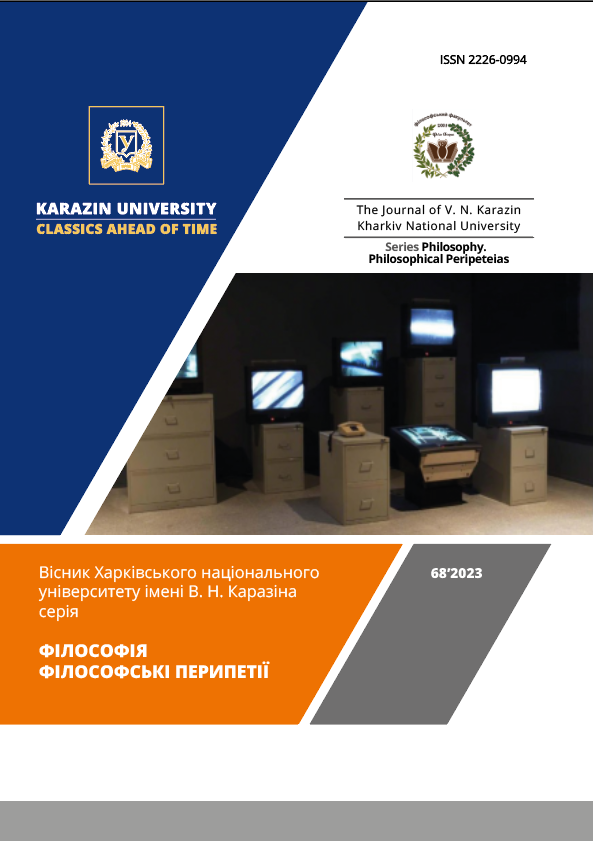ON THE QUESTION OF THE APPEARANCE OF CONSCIOUSNESS IN NEURAL NETWORKS
Abstract
Revolutionary changes in the intellectual development of mankind are discussed. This is the emergence of a second human signaling system, awareness of the nature of the formation of cognitive abilities of the human brain and the formation of highly intelligent neural networks. The nature of the formation of the second signaling system was determined not only by an increase in the number of neurons and synapses of the cerebral cortex, but also by the emerging possibility of unprecedented interactive communication within the growing number of human communities, based on the development of speech. The painful refusal of neurophysiologists and their colleagues from religious mythical ideas about the nature of consciousness is considered. It became clear that all human intellectual abilities are provided by the work of the brain and other parts of the nervous system. This departure from mystical ideas about consciousness was influenced by the development of neural networks, programming languages, and the work of neurophysiologists together with neurosurgeons. The development of artificial neural networks was facilitated not only by the efforts of neurophysiologists and their colleagues from related fields of science, but, above all, by unprecedented technical progress in the creation of high-speed computing tools with incredible amounts of memory. Analogies of the recent revolution in the development of artificial intelligence systems and the nature of the emergence of a second signaling system in humans are discussed. The development of revolutionary trends in the process of creating multiparameter neural networks made it possible to expect that a detailed study of this process will make it possible to understand the nature of the appearance of the second signaling system in higher animals. The work shows analogies between these two phenomena. The possibilities of the neural network assessing its internal state and the ability to realize its position in the external environment, which are key characteristics of self-identity and consciousness, are discussed.
Downloads
References
Posner, M.I. (1978). Chronometric Exploration of Mind. / Hillsdail N.j.: Lawrence Erlbaum Associated.
Miller, G.A. (1962). Psychology: The science of Mental Life. New York: Harped and Row.
Eccles, J.C. (1964). Brain and Conscious Experience. Study Week September 28 to October 4, 19, of the Pontificia Academia Scientiarum.
Sperry, J.C. (1970). Perception in the Absense of theNeocortical Commissures. Perception and Its Disorders, 48, pp.123-128.
Nagel, T. (2000). The Psychophysical Nexus. New Essays on the A Priori. Oxford: Oxford University press, pp. 432-471.
Gazzaniga, M.S. (2018). The consciousness instinct: Unraveling the mystery of how the brain makes the mind. Farrar: Straus and Giroux.
Cline, J., Mouret, J-B., Lipson, H. (2013). The Evolutionary Origins of Modularity / Proc. Of the Royal Sosciety of London B.: Biological Sciences 280.
OpenAI. (2023). GPT-4 technical report, 2023. arXiv preprint arXiv:2303.08774 [cs.CL] https://doi.org/10.48550/arXiv.2303.08774.
Linda S Gottfredson. (1997). Mainstream science on intelligence: An editorial with 52 signatories, history, and bibliography, 1997.
Bubeckar, S. (2023). Sparks of Artificial General Intelligence: Early experiments with GPT-4/ arXiv:2303.12712v2 [cs.CL] 24 Mar.
Shopenhauer, A. (1996). The World as Will and Representation (1818). New York: Dover, 2t.
Copyright (c) 2023 Володимир Куклін

This work is licensed under a Creative Commons Attribution 4.0 International License.
Authors who publish with this journal agree to the following terms:
- Authors retain copyright and grant the journal right of first publication of this work under the terms of a license Creative Commons Attribution License 4.0 International (CC BY 4.0).
- Authors are able to enter into separate, additional contractual arrangements for the non-exclusive distribution of the journal's published version of the work (e.g., post it to an institutional repository or publish it in a book), with an acknowledgement of its initial publication in this journal.
- Authors are permitted and encouraged to post their work online (e.g., in institutional repositories or on their website) prior to and during the submission process, as it can lead to productive exchanges, as well as earlier and greater citation of published work.






3.gif)




